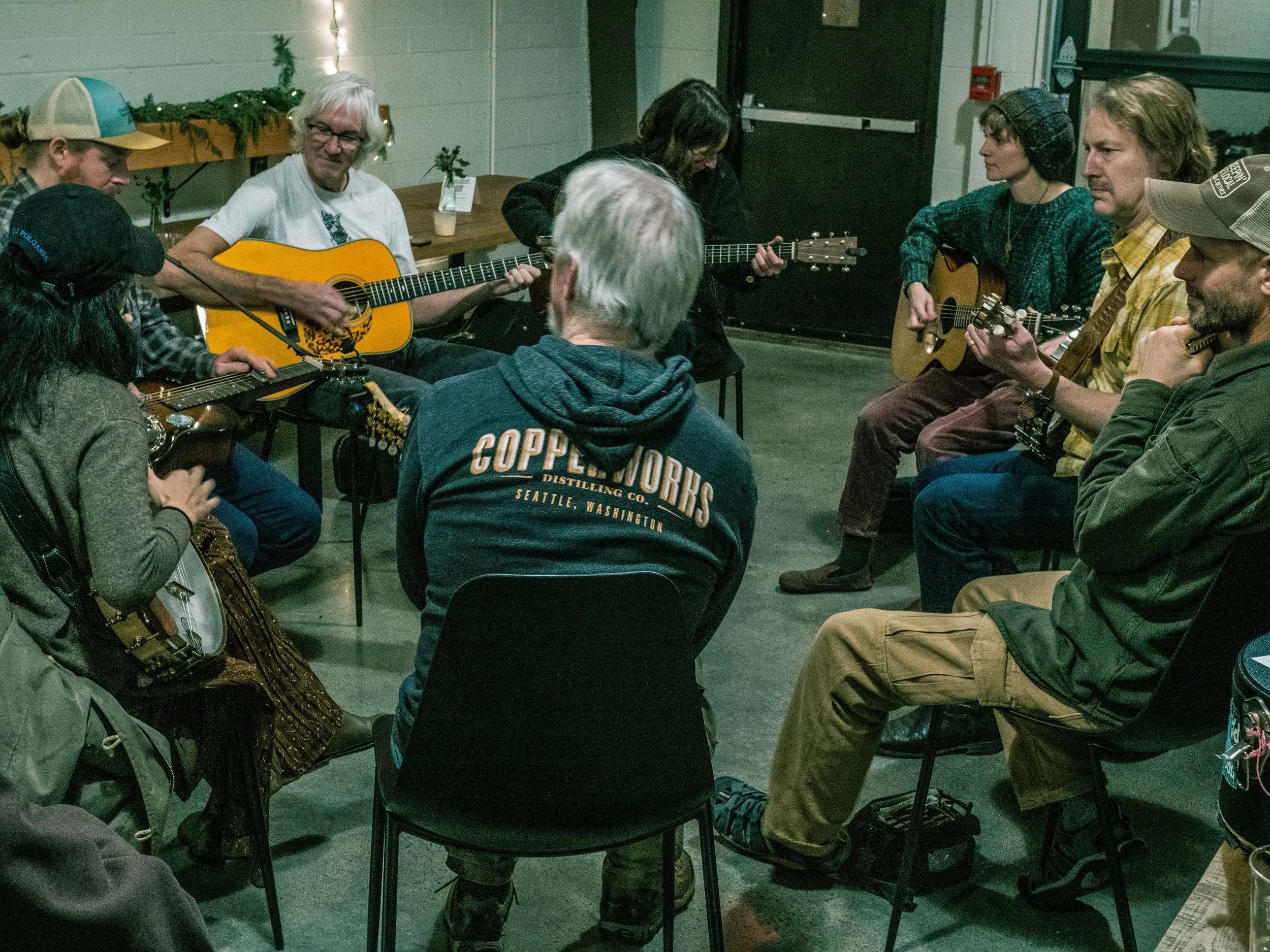Jam Guidelines
Outlanders Jam Level Guidelines
In order to make jamming more comfortable for everyone, we have devised the following level guidelines. If you are uncertain, please talk to a jam facilitator to see if the jam level is appropriate for you, and they would happily steer you in the right direction. Note that jam sessions are typically not the space for instrument-specific instruction unless otherwise specified, and we would be happy to point you to teachers.
Level 0
This level is for newcomers to bluegrass jamming, and for those wanting a solid foundation in learning commonly called songs and how to play in a bluegrass jam session (such as leading a song, picking up cues). This level still assumes some knowledge of your instrument, including being able to play some basic chords even if slowly.
Level 1
You might have a few bluegrass melodies under your belt, and the same could be said of chords, arpeggios, or licks, but might not always feel comfortable playing or improvising over a song in a jam. At this level, we assume that you still want a solid foundation to playing both lead and rhythm, and you don’t want to be rushed.
We encourage those who fall under this level to attend a slow jam to help build building blocks in playing the style.
Level 2
This level assumes a good introduction to the style, but who still want to work on fundamentals at improvising. You feel comfortable playing lead and rhythm at slow and medium tempos. You have some experience leading songs at a jam, but still feel you could learn more songs, new ideas for improvisation, and to pick up the pace. Learning a new tune at a jam usually requires a chart.
Level 2 may also work well for experienced players of other styles of music getting acquainted with bluegrass, and can pick up the basics fairly quickly.
Level 3
At this level we assume that you are comfortable in a typical bluegrass jam and can play chords and improvise on nearly all but the fastest tunes. You not only know your chords, scales, and arpeggios, but can play a break (solo) while adding tasteful embellishments as you do. You’ve studied and transcribed a few bluegrass solos and occasionally quote them as part of your own improvisations. You generally have some exposure to the subgenres of bluegrass and can pick up some, if not most chord changes by ear.
Level 4
Here, you are an accomplished player in bluegrass, and probably perform and/or teach at the local or regional level. You have a strong knowledge of the many subgenres of bluegrass. You can dive right into any song comfortably and competently in a bluegrass jam, even on the fastest tunes and on songs that you don’t know (i.e. picking up the chord changes by ear). You have a deep repertoire of songs and a large bag of tricks to play while taking a break (solo) as well as rhythm, but you’re always on the lookout for new ideas and opportunities to stretch out and step outside the box.


